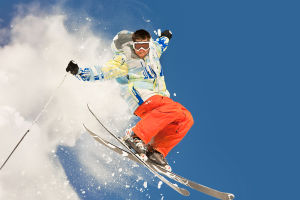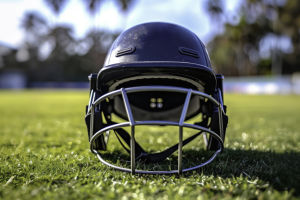
Hi Lykkers! Freestyle skiing, the exciting discipline where athletes perform tricks and jumps on skis, has gained popularity worldwide.
If you're considering diving into this thrilling sport, it’s essential to start with the right approach, equipment, and mindset.
Here’s a comprehensive guide to help you navigate the slopes with confidence and style!
1. Get the Right Equipment
Before hitting the slopes, ensure that you have the correct gear for freestyle skiing. Unlike alpine skiing, freestyle requires specific skis, bindings, and boots designed for tricks and stunts.
Skis: Opt for twin-tip skis, which are designed to allow skiing in both directions. They provide flexibility and better control when landing after jumps.
Bindings and Boots: Make sure your boots are comfortable and provide sufficient ankle support. Your bindings should allow for some movement but still offer stability, which is crucial for control during flips or spins.
Protective Gear: A helmet, knee pads, and wrist guards are essential for safety, especially for beginners who may be prone to falls. It’s also a good idea to wear padded shorts to protect your hips.
2. Build Your Base with Skiing Fundamentals
If you're new to skiing, it’s important to first build a solid foundation. Learning basic techniques, such as carving, turning, and stopping, will make it easier to progress to freestyle skiing. Spend time mastering these skills on easier slopes before progressing to more complex terrain.
Practice Balance and Control: Freestyle skiing requires excellent balance and control. Spend time working on your body position, keeping your knees slightly bent and your weight centered over your skis.
Get Comfortable with Speed: Freestyle tricks often require a bit of speed to get the right lift off jumps. Practice skiing at various speeds while maintaining control.
3. Start with Small Jumps and Features
Freestyle skiing involves terrain parks filled with various features like rails, boxes, and jumps. For beginners, it’s important to start small. Begin by practicing on small jumps or rollers. Focus on your take-off and landing, ensuring that you keep your body centered and maintain good posture.
Jumps and Air Awareness: As you progress, focus on your ability to jump smoothly. Practice getting air and learning to control your body mid-flight, preparing yourself for more complex moves later on.
Rails and Boxes: Once you're comfortable with jumps, start practicing on rails or boxes. Start with low rails, ensuring you can glide across them smoothly without losing balance.
4. Work with an Instructor
Freestyle skiing can be tricky to learn on your own, especially when attempting tricks. Consider taking a lesson with a certified instructor who can provide hands-on guidance and feedback. An instructor can help you learn essential skills and prevent you from picking up bad habits.
Progressive Learning: A professional instructor will guide you step by step, starting with basic tricks and advancing to more difficult ones once you've mastered the fundamentals.
5. Focus on Your Mental Game
Freestyle skiing requires not only physical skills but also mental preparation. It’s easy to feel intimidated by the jumps and features, but staying calm and focused is key. Practice visualization techniques to mentally prepare for tricks and stunts.
Confidence Building: Begin by setting small goals and progressing one step at a time. As you master easier tricks, your confidence will grow, allowing you to attempt more advanced maneuvers.
6. Safety First: Know Your Limits
As you start freestyle skiing, always prioritize safety. Avoid pushing yourself too hard, especially in the beginning stages. If you're not ready for a particular trick or feature, take your time and build up your skills gradually.
Stretch and Warm-Up: Warm up before every session to reduce the risk of injury. Stretching your legs, back, and arms can prepare your muscles for the physical demands of freestyle skiing.
Fall Safely: Falling is part of the learning process. Make sure to fall in a way that protects your joints, especially your wrists and knees. Avoid stiffening up during a fall, as it can increase the risk of injury.
Freestyle skiing can be an incredibly rewarding sport once you build your skills and confidence. Starting with the basics, practicing regularly, and working on your mental game, you’ll soon be ready to take on more complex features and tricks. Remember that the key to mastering freestyle skiing is patience and perseverance. With time and practice, you'll be flying through the air with ease!
How To Do Your First 360 on Skis | Freestyle Ski Tutorial
Video by Trifes

